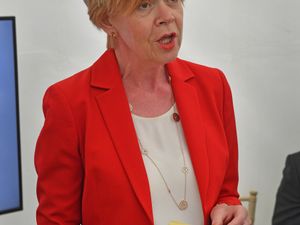Unemployment and employment rise in the West Midlands
Unemployment in the West Midlands rose by 11,000 for the three months to November to 128,000.
The region's unemployment rate was 4.3 per cent, but the number in employment in the region was up 10,000 to 2.83 million from the June to August quarter.
Nationally unemployment is at its lowest level since December 1974. The number of women who were unemployed fell by 9,000, while men were more likely to be unemployed, up by 2,000 from the last quarter, the Office for National Statistics (ONS) figures revealed. Around 729,000 men and 577,000 women were unemployed across the country.
The number of people who are claiming unemployment benefit dropped by 7,000 nationally to just below 1.31 million in the three months to November.
It means that 3.8 per cent of people who are looking for work do not have a job, largely unchanged on the previous quarter. However, the figure is 0.2 percentage points lower than a year earlier.
The numbers claiming unemployment benefits, including Universal Credit in the West Midlands, were up 5,845 to 137,845 last month – 4.4 per cent of the working population.
Wolverhampton however saw a fall of 145 to 9,735 (6.9 per cent) with Dudley down 115 to 8,290 (five per cent) and Walsall reducing by 50 to 8,025 (5.3 per cent).
Sandwell's claimants were up by 65 to 10,150 (5.7 per cent).
Across Staffordshire numbers claiming rose 225 to 11,155 (2.3 per cent). South Staffordshire bucked the trend with a fall of five to 1,245 (two per cent) with Stafford up by 75 to 1,520 (2.1 per cent), Cannock Chase rising by 50 to 1,535 (2.7 per cent)and Lichfield increasing by 10 to 1,190 (2.1 per cent).
In Wyre Forest, including Kidderminster, the numbers claiming were down 25 to 1,545 (3.1 per cent).
Charlotte Richards, a manager for Jobcentre Plus in the Blck Country, said: "The increase in numbers in work in the area is down to more opportunities coming on stream across the Black Country covering all sectors. We are getting a lot of opportunities now for young people."
The UK employment rate grew to its highest point on record, at 76.3 per cent, 0.6 percentage points higher than a year earlier and up 0.5 on the previous quarter.
David Freeman, the head of labour markets and households at the statistics agency, said: "The employment rate is at a new record high, with over two-thirds of the growth in people in work in the last year coming from women working full-time.
"Self-employment has also been growing strongly, and the number of people working for themselves has now passed five million for the first time ever," he added.
Meanwhile, the number of vacant jobs fell by 11,000 in the quarter, to 805,000. This is 49,000 fewer vacancies than the same period a year earlier.
The growth in average weekly earnings stalled, remaining unchanged at 3.2 per cent in November, the same as figures from a month earlier. This increase includes bonuses. Without them, growth slowed to 3.4 per cent, down from 3.5 per cent.
"While pay growth has eased since last summer, with inflation remaining subdued, earnings are continuing to increase in real terms," Mr Freeman said.
Earnings are still lower than in the run-up to the financial crisis, the ONS said. In real terms, average regular pay was £472 per week, which is £1, or 0.2 per cent, less than in March 2008.
Wage growth was driven by increases in the construction sector, and among financial and business services employees.
Minister for employment Mims Davies said: "With unemployment at its lowest since the 1970s, our jobcentres go beyond getting people into work - they are about community and progression. Reaching out to more people, and supporting those in work to get ahead."
She added: "This, coupled with business confidence turning a corner, is paving the way for an even stronger jobs market in 2020."




